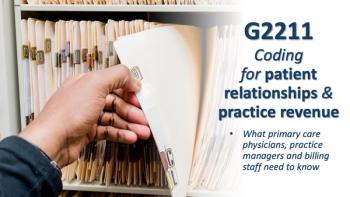
Eliminate Unnecessary Steps in the Patient Path
Look for areas to improve patient satisfaction, such as removing or reducing the time patients spend in the waiting room.
As value-based care moves to the forefront, patient satisfaction will become a key factor in driving profitability. However, the role satisfied patients play in a successful group practice goes far beyond financial incentives. Pleasant experiences with clinicians and staff also play a meaningful role in driving positive outcomes. Simply stated, research consistently shows us that satisfied patients tend to be healthier, use fewer costly resources, and are easier to guide in disease management.
Patients are modern consumers and increasingly expect convenience, speed, and efficiency with all their transactions. When I rent a car from Avis, I am impressed that on arrival, I simply look for my name on the board, walk directly to my car and drive off the lot in minutes. With Amazon, my orders are completed in one click - including payment and delivery information. In their quest to improve the experience, Avis and Amazon have eliminated many of the unpleasant steps in the traditional process through use of technology.
Yet in healthcare, too many practices remain in analog mode by asking arriving patients to sign their name on a clipboard, grab a dated magazine, and sit in a crowded waiting area. Once seated, too often they get the pleasure of sitting next to someone who is clearly ill and likely quite contagious. Unlike Avis and Amazon, these first-touch experiences leave consumers wanting, and in some cases, worried.
Many practices unwittingly accept the waiting room experience as a non-negotiable reality and look elsewhere to improve the overall care experience. Yet, if you ask patients, a large number will point to the waiting room as their least pleasant part of the entire visit. Why are so few organizations failing to look for ways to minimize, or even eliminate, the dreaded waiting room?
Recently at their Annual Conference, the Medical Group Management Association (MGMA) presented their
One takeaway from Becker's session is this: to succeed in this kind of endeavor, practice leaders should realize that eliminating the waiting room requires doing much more than simply converting the lounge-like space into an exam room or lab. To truly improve the care experience by eliminating the waiting room, leaders need to take the time to fully understand their own patient flow, from scheduling through patient discharge.
Such analysis requires practices to seek objective answers to a variety of questions such as:
•How long do patients wait in the waiting room before being escorted to an exam room?
• How long do patients wait for a medical assistant to take vitals, ask about medications, and update the EHR?
• How much longer do patients wait in an exam room before the doctor arrives?
• How much time do doctors spend face-to-face with patients?
• Do doctors have enough time to answer all patient questions?
While it is possible to answer these questions through manual observation and an old-fashioned stopwatch, the exercise is likely to be tedious and inconsistent with the actual workflow that occurs over weeks or months of encounters.
A more efficient way to get this data is by using a real-time locating system (RTLS), the technology used by Becker's Harwick Award-winning clinic. These systems employ sensors to monitor the movement of patients, staff and equipment in real time. With this discrete technology in place, medical practices can obtain useful longitudinal data on wait times, space utilization, staff productivity, and more.
With literally thousands of data points, the RTLS system can depict workflow reality in a manner that is hard for anyone to dispute - and that 'anyone' includes physicians. Armed with this information, practices can develop an understanding of how the patient experiences their visit from check-in to departure. Perhaps more important, with knowledge of waits and bottlenecks, the clinic's workflow optimization teams can target opportunities for improvement with the goal of creating a seamless, value-added experience.
So next time you rent a car from Avis or order something on Amazon, remind yourself how their customer-centric technology has enabled you to have an efficient and pleasant experience. Then consider how you can use the latest technologies in workflow optimization to improve your own clinic operations.
"Dr. Tom" Schwieterman is the Vice President of Clinical Affairs and Chief Medical Officer for Midmark Corporation, a provider of workflow technology for outpatient settings.
Newsletter
Optimize your practice with the Physicians Practice newsletter, offering management pearls, leadership tips, and business strategies tailored for practice administrators and physicians of any specialty.








